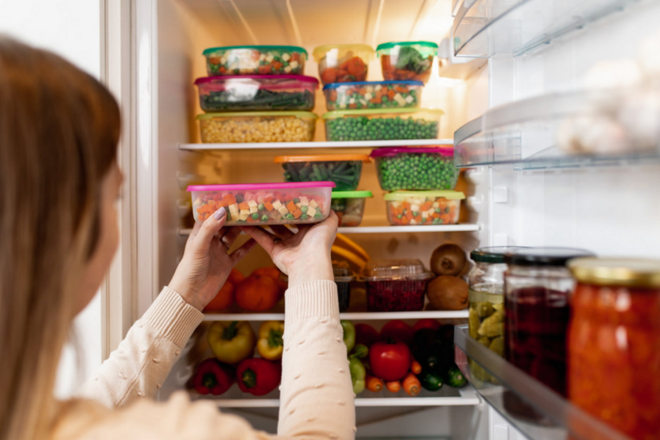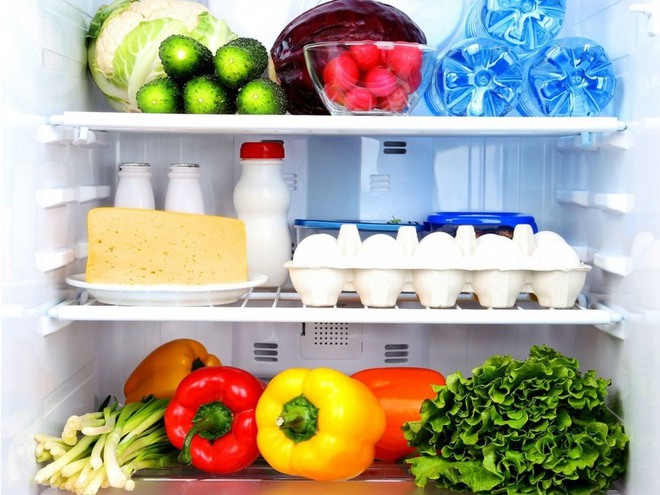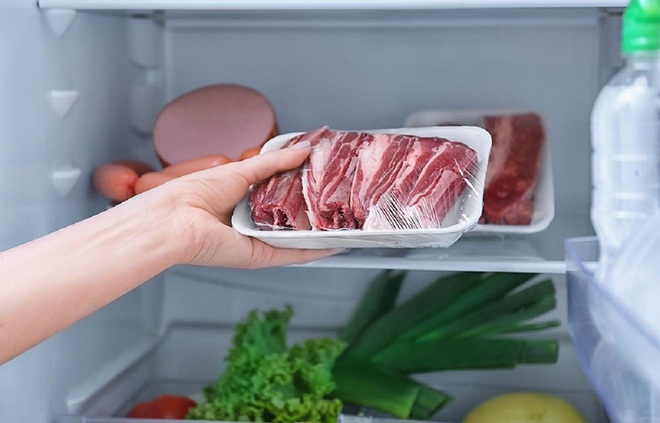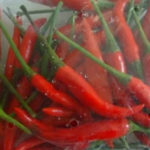1. Categorize before refrigerating
The first thing you need to keep in mind is to categorize the food before putting it in the refrigerator.
For meat and fish
First, wash the meat or fish and drain it. Then divide each portion of food into a ziplock bag or food container that is appropriate for each meal.
Dividing up the food will help you avoid having to defrost large amounts of food at once, which can affect the quality of the food the next time you use it.
Finally, place the divided food in the refrigerator’s cool compartment (from 2 – 4 degrees C) if you want to use it within 3 – 5 days, or in the freezer compartment (about -18 degrees C) to use within 3 months, or even up to 12 months, but it is best to use it as soon as possible.

Categorizing food helps the refrigerator clean, organized and neat.
For vegetables
Do not wash the vegetables before storing them if you do not need to use them right away. All you need to do is remove any wilted or bruised parts, but be sure not to let the vegetables get wet.
Then, divide the vegetables into a ziplock bag or a plastic bag (with air vents) and place them in the refrigerator’s vegetable compartment. This compartment is designed to have the right temperature and humidity to keep vegetables fresh.
For fruits
With fruits, you should categorize them into 2 groups: fruits with the skin on and fruits with the skin off.
For fruits with the skin on: Remove any damaged stems or bruised parts, then use a clean, dry cloth to wipe the surface of the fruit. Finally, put the fruit in a ziplock bag with air vents and place it in the refrigerator’s cool compartment at 3 – 5 degrees C.
For fruits with the skin off: Store them in a sealed food container with a lid, place them in the refrigerator’s cool compartment at an optimum temperature of 3 – 5 degrees C, and eat them as soon as possible.
For cooked food
For cooked food, let it cool before placing it in a food container, then cover it and place it at a temperature of 2 – 4 degrees C. The ideal time to use it is within 3 days. You can also divide up the food before storing it to make it easier to use.

Do not leave food in the refrigerator without wrapping it in a bag or dividing it into containers.
2. Do not overfill
Overfilling the refrigerator can affect the circulation of cold air, which can cause food to cool unevenly. This can cause food to spoil easily due to not being cold enough.
3. Clean the refrigerator regularly
The environment inside the refrigerator can still contain mold and bacteria from food if you do not clean the refrigerator regularly.
Cleaning the refrigerator allows the refrigerator’s motor to rest, while also helping to remove any residue from leftover food. Cleaning also removes odors and creates a fresh atmosphere inside the refrigerator.
4. Do not store food for too long
Many studies have shown that the longer meat and fish are stored in the refrigerator, the more nutrients are lost and the more harmful substances can be produced.
In addition, the process of freezing and thawing can also lead to the loss of up to 1/3 of the fat-soluble substances in the meat.
On average, each freezing and thawing cycle can reduce the nutritional value of food by up to 20%. Therefore, you should consider how long to store each type of food in the refrigerator.

Food should be used as soon as possible.
5. Set the correct temperature
Each group of food needs to be stored at the appropriate temperature, especially vegetables which are usually stored in the cool compartment at 1 – 4 degrees C.
Fresh food such as seafood, meat, and fish can be kept at a temperature of 1 – 3 degrees C or in the freezer at -18 degrees C.
Uncovering 10 Astonishing Methods to Neutralize Refrigerator Odors
 Refrigerator Odors’>
Refrigerator Odors’>Having a fresh-smelling refrigerator is essential, and Dien May GREEN has the answers to ensure this. In this article, you will find tips to help remove odors and steps to take to prevent unpleasant smells from taking over your refrigerator.
Ten Strategies to Streamline Your Cooking Process
Are you a busy housewife looking for ways to save time in the kitchen? Did you know that flossing can also help you out? Check out these 10 tips to help you quickly and easily prepare delicious meals for your family. Learn how to peel garlic in 10 seconds and cut cherry tomatoes quickly for a healthy and tasty meal.
4 Strategies for Storing Chili for One Month
Do you want to enjoy the fresh, spicy flavor of chili peppers all month long? Look no further! This article provides tips and tricks for storing chili peppers so that they stay fresh and flavorful for up to a month. Learn how to best preserve your peppers and savor their zesty taste for weeks to come.


































